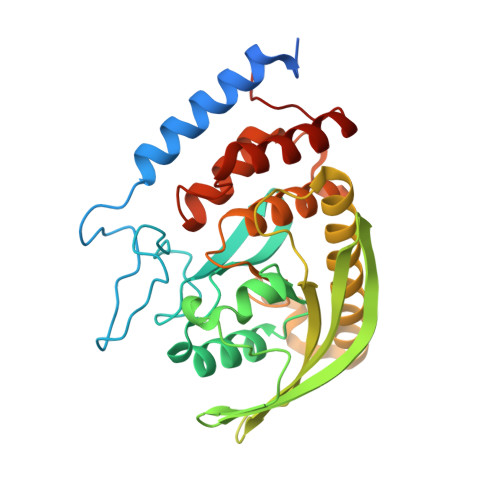Impaired acid catalysis by mutation of a protein loop hinge residue in a YopH mutant revealed by crystal structures.
Brandao, T.A., Robinson, H., Johnson, S.J., Hengge, A.C.(2009) J Am Chem Soc 131: 778-786
- PubMed: 19140798
- DOI: https://doi.org/10.1021/ja807418b
- Primary Citation of Related Structures:
3F99, 3F9A, 3F9B - PubMed Abstract:
Catalysis by the Yersinia protein-tyrosine phosphatase YopH is significantly impaired by the mutation of the conserved Trp354 residue to Phe. Though not a catalytic residue, this Trp is a hinge residue in a conserved flexible loop (the WPD-loop) that must close during catalysis. To learn why this seemingly conservative mutation reduces catalysis by 2 orders of magnitude, we have solved high-resolution crystal structures for the W354F YopH in the absence and in the presence of tungstate and vanadate. Oxyanion binding to the P-loop in W354F is analogous to that observed in the native enzyme. However, the WPD-loop in the presence of oxyanions assumes a half-closed conformation, in contrast to the fully closed state observed in structures of the native enzyme. This observation provides an explanation for the impaired general acid catalysis observed in kinetic experiments with Trp mutants. A 1.4 A structure of the W354F mutant obtained in the presence of vanadate reveals an unusual divanadate species with a cyclic [VO](2) core, which has precedent in small molecules but has not been previously reported in a protein crystal structure.
Organizational Affiliation:
Department of Chemistry and Biochemistry, Utah State University, Logan, Utah 84322-0300, USA.



















